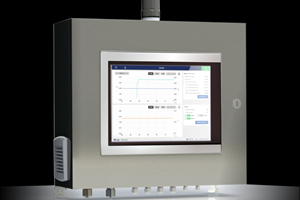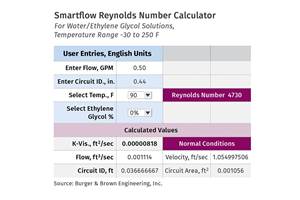Integrated Process Cooling Boosts Output, Cuts Costs
Closed-loop system helps an extrusion processor maintain quality of reusable straws and other products.
If you ask an extrusion processor to identify the most critical factor in the process, many will answer, cooling. SELA Inc., York, S.C. would be one of those.
SELA was founded in 1983 to produce liquid-sampling devices. These are clear, rigid PP pipes used for taking samples in fuel-storage tanks, waste-treatment plants, water-treatment facilities, etc. While SELA still makes this product, its main business today is reusable PP and PE drinking straws, which it produces in wall thicknesses of 0.20-0.25 in. (roughly twice the thickness of disposable straws) for hospitals, cruise ships, amusement parks, tumbler manufacturers, etc. The company operates three extrusion lines at its 16,000 ft² plant, where plans are on the horizon to add another 6000-7000 ft². It also runs one injection molding machine to produce straw tips.
Consistent process temperatures for its three extrusion lines are important to SELA because they help ensure the highest possible clarity, especially when using a high-cost clarified resin or colorant. With cooling being a limiting factor in extrusion, having a topnotch process-cooling system also allows SELA to increase its throughput while controlling water temperatures.
SELA traditionally had used air-cooled chilling systems, recalls Ronnie Roberts, president and owner. But when adding the third extrusion line in 2007, the firm was open to other alternatives. SELA was looking for a system that would help maintain a stable heat profile and deliver proper cooling capacity from start to finish. It wanted to steer clear of air-cooled chilling systems because of already high ambient temperatures in the plant.
SELA ultimately decided to install a closed-loop system from Frigel (U.S. headquarters in East Dundee, Ill.). The integrated system, which replaced two 5-ton air-cooled chillers plus a smaller unit, included a 32-ton Ecodry central cooler, which cools each of the three extruders and the injection press. The Ecodry unit supplies cooling water to single-zone Microgel chiller/TCU units located at each downstream cooling tank and to a dual-zone Microgel chiller/TCU unit dedicated to the injection machine.
All units provide SELA with the ability to use “free cooling” when ambient temperatures permit. With so-called free cooling, the central cooler and the Microgels provide water at the proper temperature to processing equipment without needing compressors to generate chilled water. The Microgel units automatically cycle off their compressors to satisfy the cooling load at the exact temperature requirement. This process allows SELA to lower energy consumption and cut costs. SELA also chose the Microgel dual-zone chiller/TCU based on its ability to satisfy both chilled and, if needed, warm water for specific applications.
The Ecodry and machine-side chiller/TCUs provide SELA with more consistent temperature control while also eliminating water waste, says Roberts. He says the move to the new chilling system resulted in:
• Energy and water savings of approximately $10,000/yr compared with the alternative setup originally considered. In all, water use declined from approximately 25,000 gal/month to 4000 gal/month, none of which is used for process cooling.
• Increased throughput on the extrusion lines by as much as 15%.
• Continued consistency in quality.
• Maximum uptime due to decreased maintenance and system redundancy.
SELA has more recently installed a second 32-ton Ecodry unit, giving the plant 64 tons of capacity for more efficiencies and anticipated cost savings, while also providing increased redundancy.
Roberts notes, “Frigel’s closed-loop system allows us to maintain a stable heat profile, which permits us to increase our throughput and maintain the quality that we are known for in our product lines.”
Related Content
Machine-Side and Central Chiller Lines, Industry 4.0 Controls to Launch
Frigel will use K 2022 to showcase a number of developments in process cooling, including new and expanded lines of central and machine-side chillers, as well as advanced control platforms.
Read MoreCooling Geometry and the Reynolds Calculation
The original Turbulent Flow Rate Calculator worked well with a round circuit diameter, such as a drilled passage, but not as well using hydraulic diameters. Here’s how the problem was fixed.
Read MoreWisconsin Firms Unite in Battle Against Covid
Teel Plastics opened new plant in record time, partnering with AEC & Aqua Poly Equipment Co. to expand production of swab sticks to fight pandemic.
Read MoreLow-Flow Indicator Has Optional Flow Regulator
Burger & Brown's Smartflow Low Flow indicator monitors critical, restricted cooling paths such as mold cooling lines with bubblers or baffles.
Read MoreRead Next
Advanced Recycling: Beyond Pyrolysis
Consumer-product brand owners increasingly see advanced chemical recycling as a necessary complement to mechanical recycling if they are to meet ambitious goals for a circular economy in the next decade. Dozens of technology providers are developing new technologies to overcome the limitations of existing pyrolysis methods and to commercialize various alternative approaches to chemical recycling of plastics.
Read MoreTroubleshooting Screw and Barrel Wear in Extrusion
Extruder screws and barrels will wear over time. If you are seeing a reduction in specific rate and higher discharge temperatures, wear is the likely culprit.
Read MoreHow Polymer Melts in Single-Screw Extruders
Understanding how polymer melts in a single-screw extruder could help you optimize your screw design to eliminate defect-causing solid polymer fragments.
Read More

















.png;maxWidth=300;quality=90)







